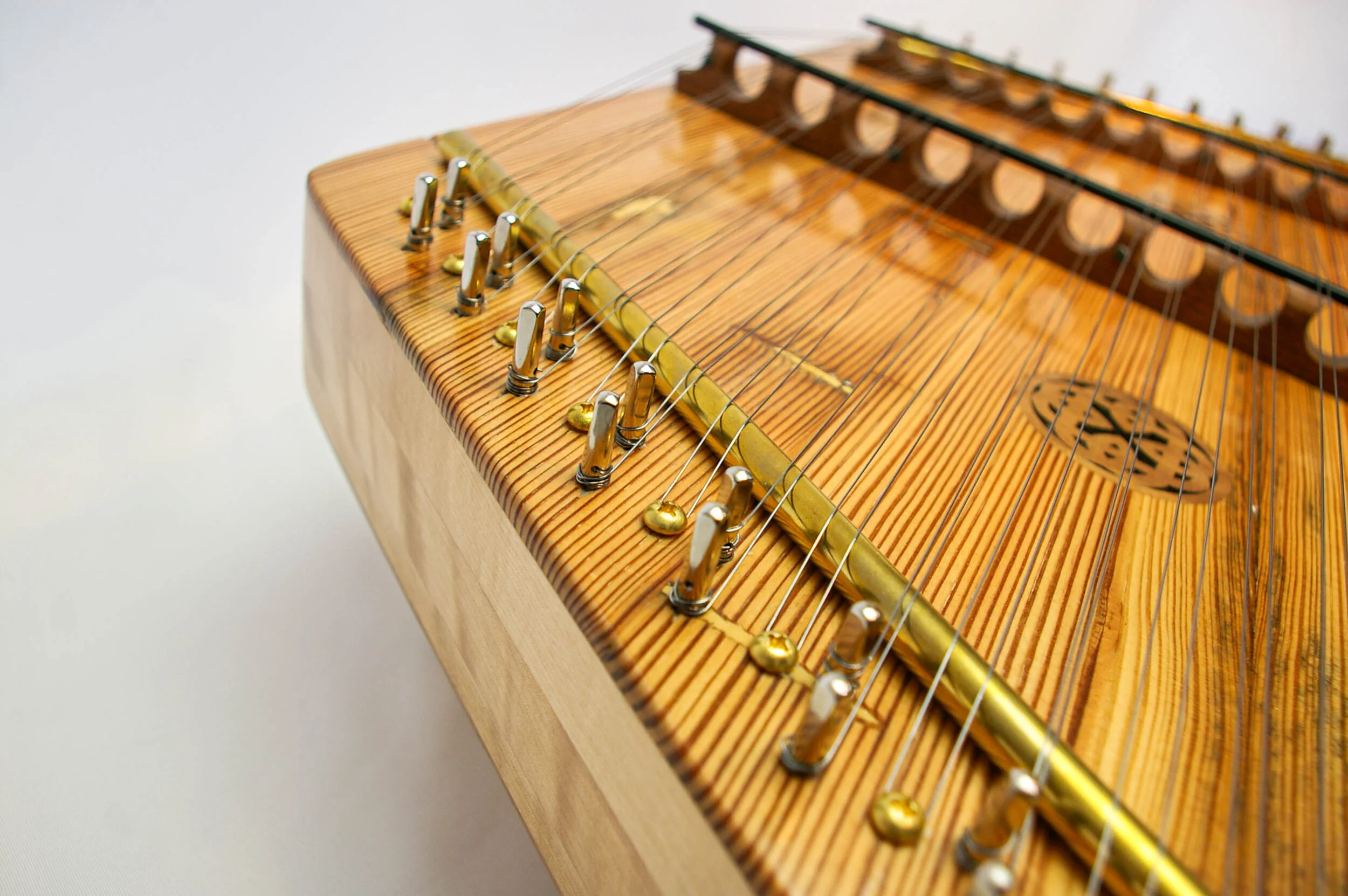17/16 Pine Soundboard Hammered Dulcimer
This one-of-a-kind, handmade Pine Soundboard Hammered Dulcimer showcases the unique character of reclaimed Yellow Pine from a barn built in 1810 in rural Virginia.
This instrument sold for $1830.00. I cannot guarantee that I can acquire more quarter sawn heart Yellow Pine from virgin timber, since it is so rare, but I do have a source for heart quarter sawn Yellow Pine. It will have a similar sound as this one.
Construction
This instrument is very unique in that the soundboard is made out of hand selected quarter sawn heart Yellow Pine which came from a barn built around 1810 in rural Virginia. It has been repurposed for making this instrument. The perpendicular stripes you see in the photographs are where nails had been. It is very difficult anymore to obtain heart old growth Yellow Pine which came from virgin forests. The millwright usually selected to quarter saw lumber when the tree was very large in circumference because of the limitation of his circular saw. Quarter sawn timber is ideal for a soundboard because the grain is vertical as opposed to horizontal especially in soft wood like Yellow Pine; it gives a uniform vibration across the soundboard providing an optimal rich dark sound.
The backboard is made of hand selected curly Yellow Birch. The side tuning rails take the greatest pressure and must resist bowing. This is why they are made of three 2 ¼” wide pieces glued together. The two bottom pieces are curly Yellow Birch and on top is Bird’s Eye Hard Maple for the tuning pins. These two woods are very similar in strength and density, and when laminated together laterally, they make a very strong bond which can endure the enormous stress of the tensioned strings without bowing. I chose curly Yellow Birch for the back board because it is a very dense wood and the sound readily bounces off, producing ideal amplification.
The front and rear rail are made of American Black Walnut. The treble bridge and the bass bridge are also made of Walnut as well as the sound hole rosettes.
The internal structural braces and the tone bar are made of Yellow Poplar, chosen for its light weight to reduce the overall instrument weight but more importantly, Poplar is a low density wood which vibrates evenly, enhancing the richness of the instrument tone when the strings are struck. This is especially important for the tone bar and the bridge supports which translates the sound vibration throughout the instrument. The tone bar is a critical element because it is precisely placed under the center of the soundboard. It is slightly higher than the rest of the internal structural material which connects the soundboard directly to the backboard. When the instrument is strung and the strings are tensioned for tuning the tone bar creates a slight arch in the soundboard, maximizing the sound vibrations throughout the instrument. The internal components of these beautiful instruments are as important as the external elements which you can see.
Sound
This instrument has 66 strings which makes 4 octaves. The lowest note is D-1 and the highest note is B-4. The left bridge is the treble bridge which is played on each side with hammers. The notes on the right side of the bridge are whole notes in the scale and the notes on the left side of the bridge are five steps higher than the notes on the right side of the bridge. When playing on both sides of the bridge simultaneously you are playing major chords. The bridge on the right side of the soundboard is the bass bridge which is played on the left side of the bridge and is tuned an octave lower than the notes on the right side of the treble bridge. Inlaid in the bridges are black markers for orientation reference. They mark the C and G notes.
What’s included
Included in the sale of this instrument is a pair of handcrafted double sided hammers, a T-handle tuning wrench, a tuning chart and a Korg electronic tuner.
Details
Dimensions: 40” long, 19.25” wide, 2.75 deep
Weight: 16 lbs.
66 strings makes 4 full octaves
Lowest note: D-1
Highest note: B-4















